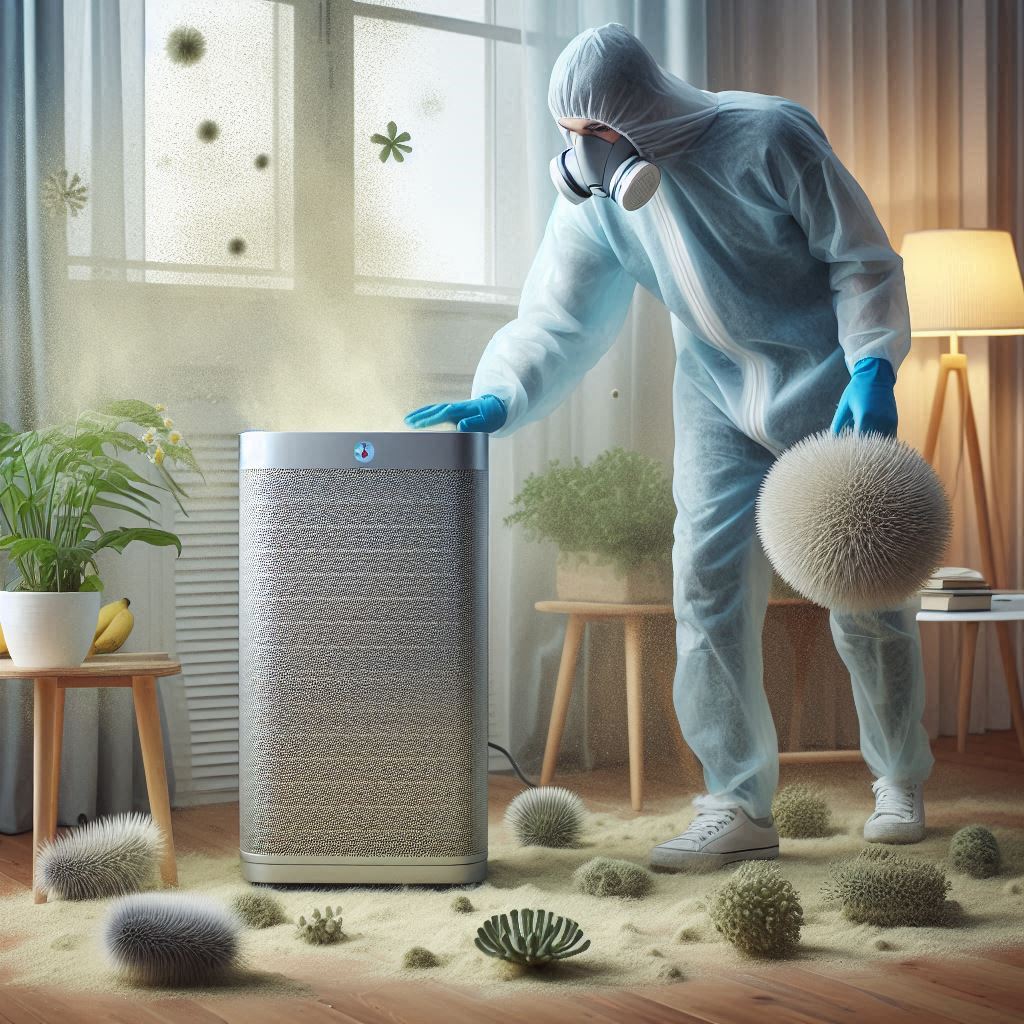Mold Spores in Air: What You Need to Know

Mold spores in the air might sound like something from a science fiction movie, but they’re very real and far more common than you think. Invisible to the naked eye, these pesky particles travel through the air and sneak into your home, causing health issues and structural damage. But don’t worry—you don’t need to wear a hazmat suit just yet! With a few effective strategies, you can fight mold spores and win the battle for a healthier home.
Is Mold Airborne?
The short answer is yes—mold can be airborne. Mold reproduces by releasing microscopic spores into the air, allowing it to spread to new areas. These spores float around, searching for warm, damp environments to settle in, making bathrooms, basements, and kitchens prime targets.
How Far Can Mold Spores Travel in the Air?
Mold spores can travel surprising distances, depending on air currents. They can hitch a ride on your clothes, shoes, or even your pet’s fur, making them tricky to contain.
How Do You Know If Mold Spores Are in the Air?
Wondering if your home is a breeding ground for airborne mold spores? Here are some telltale signs:
i. Persistent musty odor
ii. Unexplained allergies or respiratory issues
iii. Visible mold patches
If you notice these signs, it’s time to investigate and eliminate mold spores in your home.
What Kills Mold Spores in the Air?
Getting rid of airborne mold spores requires a combination of targeted cleaning and preventative measures. Here are some of the best ways to tackle them:
1. HEPA Air Purifiers
Investing in a high-quality HEPA air purifier can help trap airborne mold spores, reducing their presence indoors.
2. Natural Ventilation
Does fresh air kill mold? Not directly, but increasing airflow can reduce humidity, making it harder for mold to thrive.
3. Non-Toxic Cleaning Solutions
Use natural remedies like vinegar and baking soda to clean moldy surfaces. These solutions are excellent for preventing spores from spreading.

How to Get Rid of Mold in Your Home
Eliminating mold starts with targeting its source. Here’s how to take control:
Step 1: Identify Problem Areas
Inspect your home for leaks, damp spots, and areas with poor ventilation.
Step 2: Use a Spray to Kill Mold Spores in the Air
Products specifically designed to combat airborne spores, like mold sprays, can help eliminate mold in your home.
Step 3: Regular Cleaning
Wondering what to use to clean mold? A mix of water and vinegar is an effective and eco-friendly option.
Can Mold Be in the Air Without You Knowing?
Unfortunately, yes. Mold spores are sneaky and can go unnoticed until you start experiencing symptoms like coughing, sneezing, or headaches. Regular air quality tests can help detect their presence early.

How to Reduce Mold Spores in Your House
Preventing mold spores from taking over your home involves a proactive approach:
i. Control Humidity: Keep indoor humidity levels between 30-50%.
ii. Fix Leaks Promptly: Water damage is a mold magnet.
iii. Use Mold-Resistant Paint: Protect your walls from future infestations.
iv. Clean HVAC Systems: Ensure your heating and cooling systems aren’t circulating mold spores.
Can Mold Spread Through the Air?
Mold doesn’t just stay put—it’s a wanderer. Airborne mold spores can land on furniture, clothing, and walls, starting new colonies. To avoid this, clean and vacuum regularly and consider professional mold remediation for severe infestations.
For residents of Scranton, Scranton Mold Remediation offers expert solutions tailored to your needs.
What’s the Best Way to Kill Mould?
There’s no single best way to kill mold, but combining strategies works wonders:
i. Spray and Wipe: Use mold sprays to target visible spots.
ii. Air Purification: Remove spores from the air.
iii. Professional Help: Hire experts for comprehensive mold remediation.
Why You Shouldn’t Ignore Mold Spores in Air
Ignoring mold spores is like ignoring a slow leak—it’s only a matter of time before it becomes a major issue. Airborne mold spores can trigger allergies, asthma, and other respiratory problems. By addressing the problem early, you can ensure a healthier living environment for your family.
A Mold-Free Future
Dealing with mold spores in the air doesn’t have to be overwhelming. With the right tools and knowledge, you can keep your home safe and mold-free. And if the job feels too big to tackle alone, Mold Remediation PA is here to help.